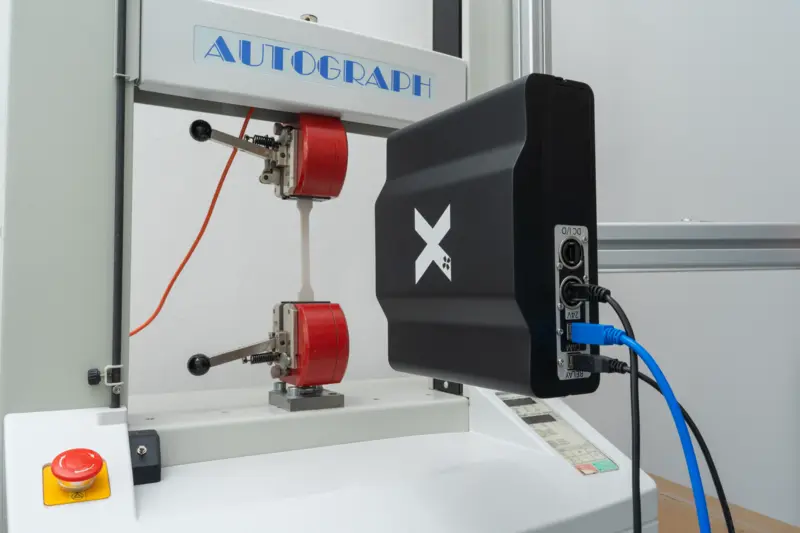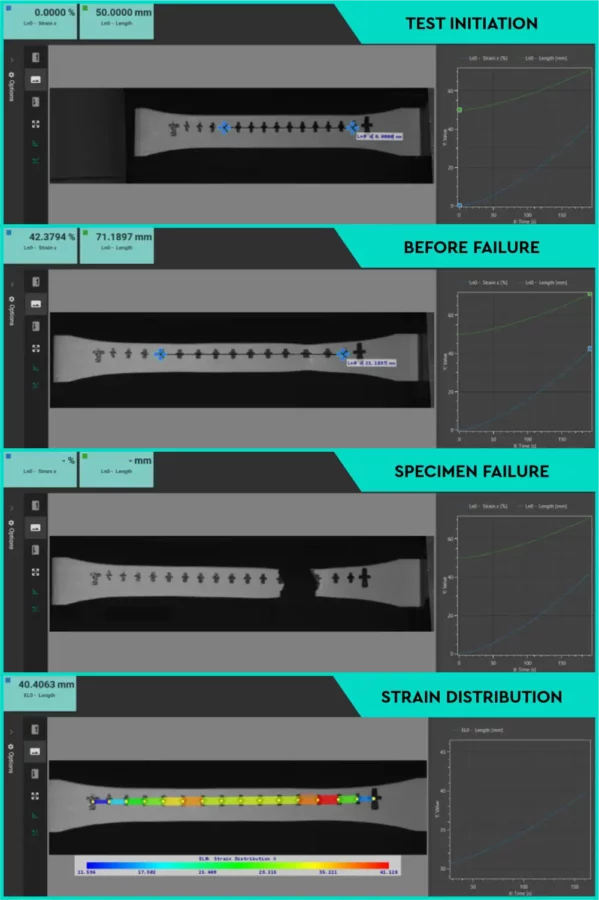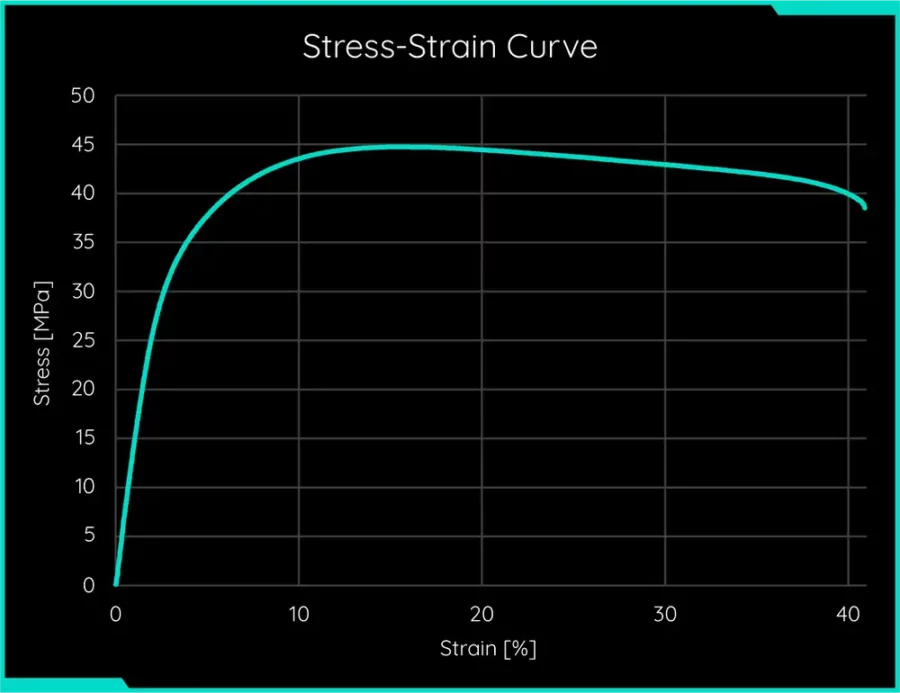UNIAXIAL TENSILE TEST OF POLYMER MATERIAL SPECIMEN
KEYWORDS
- Plastic specimen testing
- Tensile test
- Young’s modulus
- Stress-strain curve
- Line strain distribution
- Standard: ISO 527-1:2019
TEST SET-UP
- X-Sight-2105 extensometer
- Alpha DIC® modules: AX
- Measurement probes:
- Line probe
- Extreme line probe
- Line probe
- PA 12 dogbone specimen
OUTPUT
- Stress-strain curve
- Young’s modulus

Planar plastic specimens of printed PA 12 with dogbone
geometry were measured with standardized X-Sight-
2105 measuring system.
Initially, the X-Sight-2105 system was positioned in front
of the sample at the correct distance and calibrated
using a corresponding calibration grid.
Because the surface of the specimen lacks a visible
natural pattern, markings were necessary to secure
optimal measuring conditions.
Data on extension and strain were obtained with
detailed information on strain distribution along the
designated measurement line. The test was performed
according to EN ISO 527-1.

WHY CHOOSE X-SIGHT?
- Easily manageable calibrations
- A wide range of available outputs
- Real-time and post-process measurements
- Multi-probe measurement
- High sample rate real-time strain distribution
- Easy-to-use and intuitive user interface
MEASUREMENT PROCESS AND TOOLS

LINE PROBE 
A basic probe for measuring strain and length.
Measured values:
- Strain ε – Percent strain change between
endpoints - Length – Total length between endpoints
in selected physical unit - Δ Length – Euclidean length change in
selected physical unit - Δ Length X – X axis directional length
change in selected physical unit - Δ Length Y – Y axis directional length
change in selected physical unit - X Axis Angle CCW(+) – angle between X
axis and the Line Probe direction, positive
in counter clockwise direction - Δ Angle CCW(+) – angle change, positive
in counter clock wise direction
EXTREME LINE PROBE 
An advanced probe for axial neck detection.
The Extreme Line enhances the Line Probe
functionality by adding the axial neck detecting
feature. The Extreme Line divides the measured
specimen into shorter segments and identifies the highest strain gradient. Consequently, strain is always evaluated over the failure area.
MEASUREMENT EVALUATION

Measured force and calculated strain data
were evaluated to obtain the Stress-Strain
curve and determine Young’s modulus.
The resulting value:
E = 1.55 GPa
🗎 Download PDF version of this report here